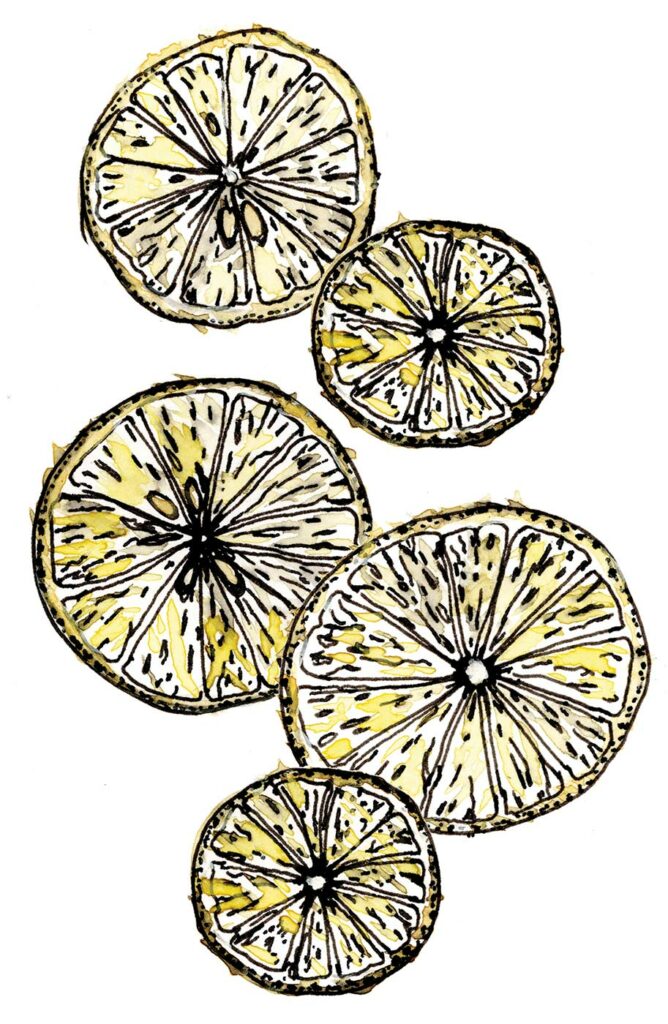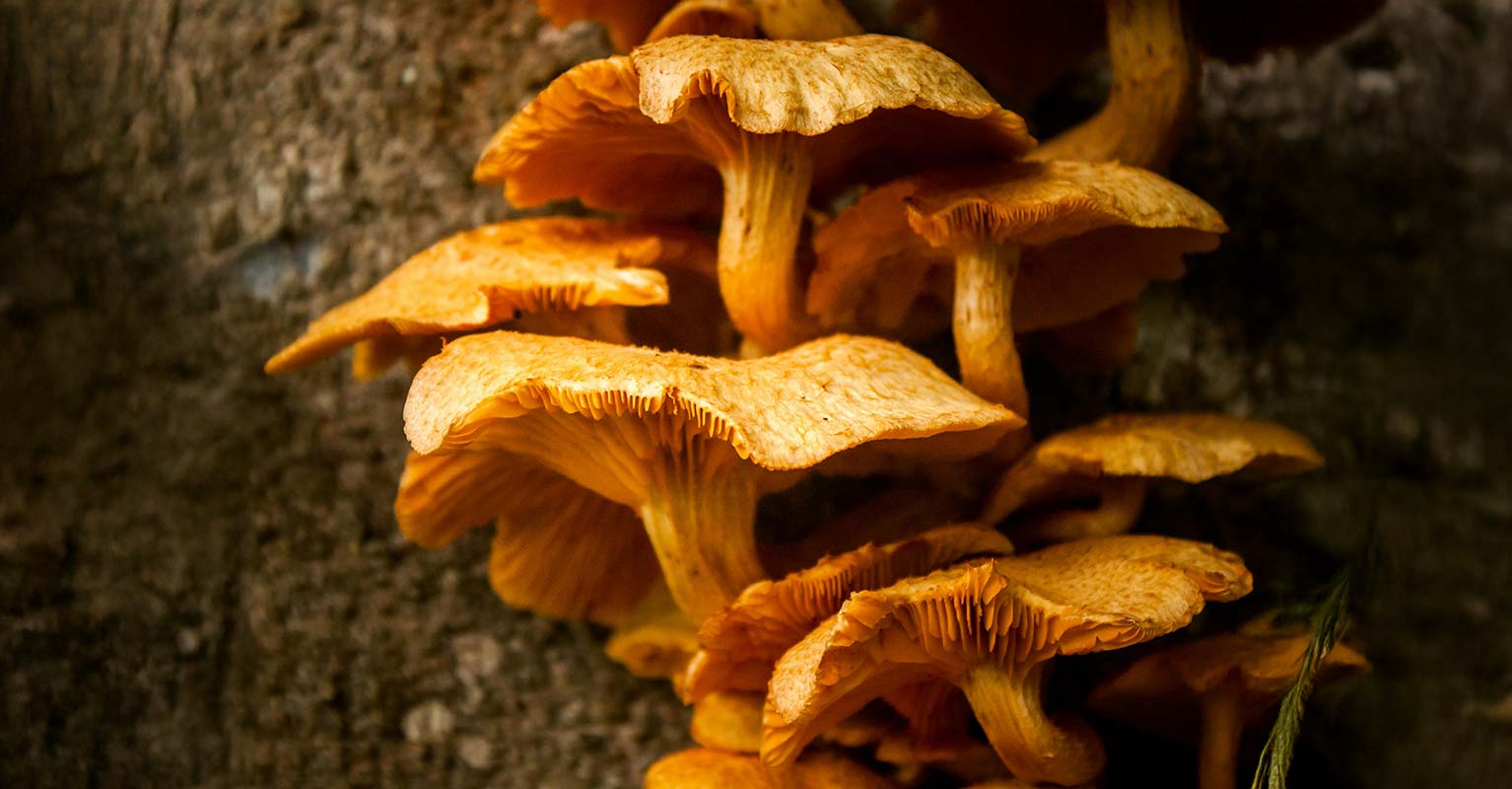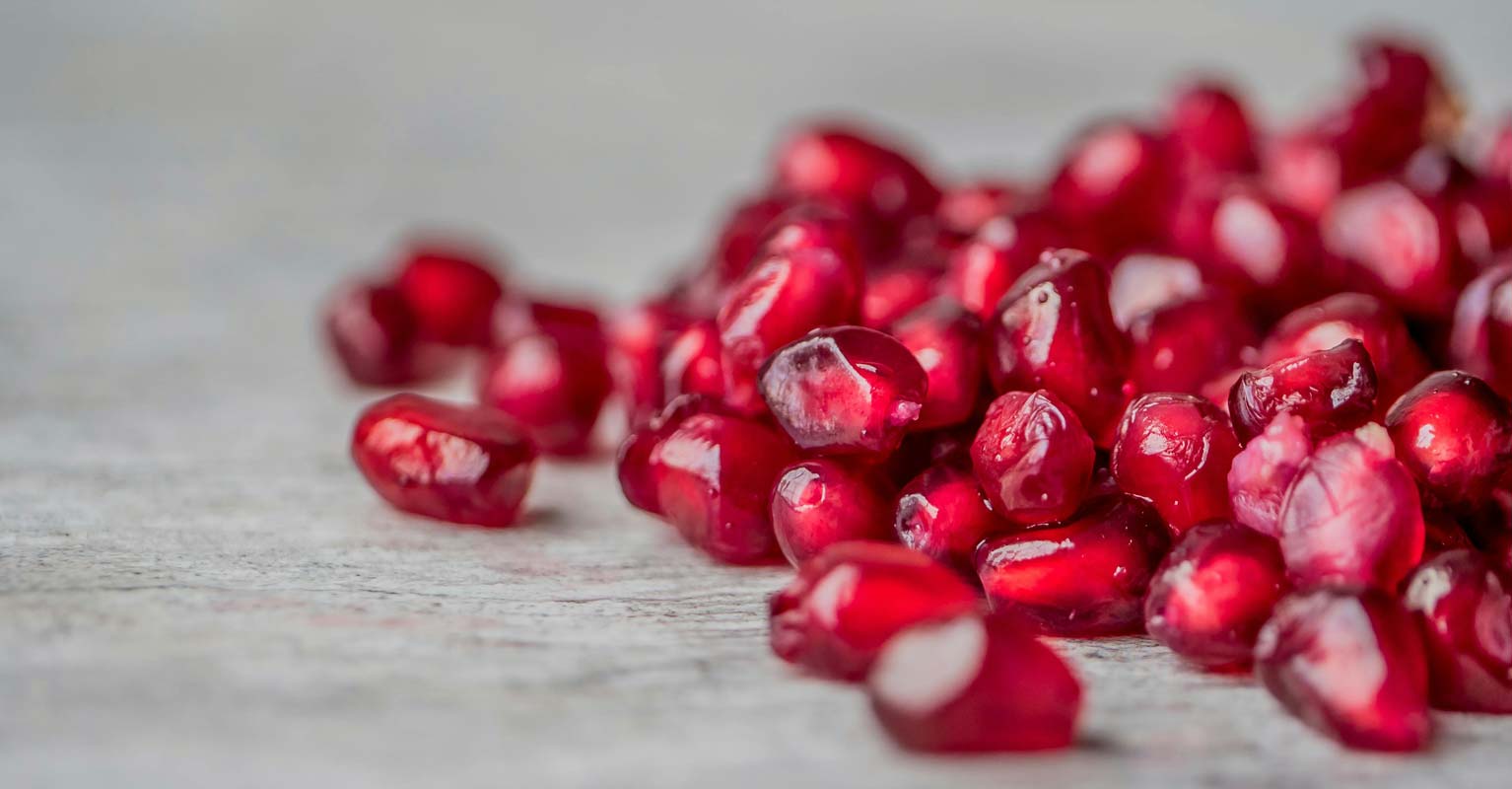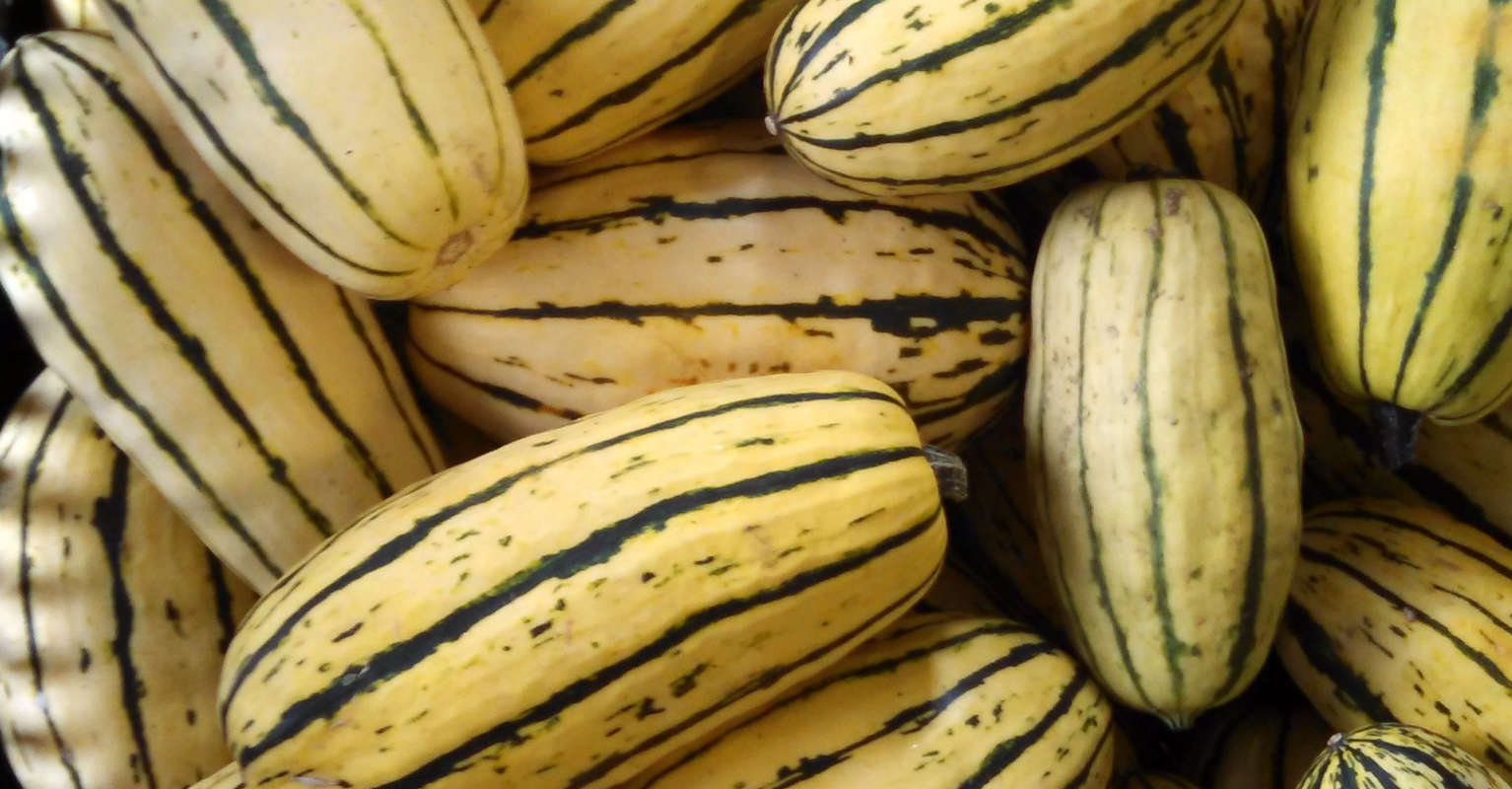MEYER LEMONS
Sun-shiny gold and almost orange, Meyer lemons are a hybrid cross of citron and tangelo, a mandarin/pomelo hybrid. Their sweetness comes from the mandarin side of the family, they’re less acidic than mainstream lemons, and they have a much thinner skin (which is why we don’t see them very often, as they are grown in warm places and are not the best travelers).
Seeing Meyers in our groceries this time of year gives me hope that the sun will eventually melt the snow and warm our soil for growing. Squeeze halves into glasses of bubbly water, use a couple to poach shrimp, or, if you’re craving something sweet, let them shine in things that use a good amount of juice rather than just a spritz. I think of curds, custards, and creams—or you could make the Lemon Lavender Bundt Cake from our Spring 2021 issue (ediblebozeman.com/recipe/lemon-lavender-bundt-cake). For a shortcut dessert, stir some juice into a bowl of mascarpone or crème fraîche, sweeten lightly, and serve with berries and a wheatmeal biscuit or graham cracker.

GREEN GARLIC
Green garlic starts showing up at farmers markets and in CSA boxes come June, adding a welcome just-dug freshness to our local produce options. Garlic is planted in the fall, most to become bulbs that hold many cloves within their papery skin. Others are planted with the intention of an early spring harvest, the result being an immature version of the familiar big bulb known as green garlic.
Use the whole plant—the white part and tender greens—thinking “garlic plus some scallion”—it’s two vegetables in one! Mince the bulb, slice the greens thinly, and sizzle with a pinch of red pepper flakes in olive oil for a delicious pasta, or make a sauce with white wine and butter to steam some clams, cook prawns, or drizzle over fish.
CASTELFRANCO RADICCHIO
This large, leafy beauty is pale green and cream in color with burgundy speckles, and it lasts for days and days in your refrigerator. Castelfranco radicchio thrives in cool temperatures, which means that winter chicories like radicchio can be a spring crop in our region. This radicchio is a cross of escarole with Treviso radicchio, which mellows the typical radicchio bitterness and lends a sweet undertone. The leaves can stand up to cooking, but they are also very good in salads raw. When using chicories like radicchio in salads, I like to combine them with something sweet, like a fruit (sliced Fuyu persimmon, pear, pomegranate seeds, figs, or dates); something rich and salty, like shavings from a wedge of good Parmesan or ricotta salata, toasted nuts, or prosciutto, and a bit of honey in the vinaigrette.




